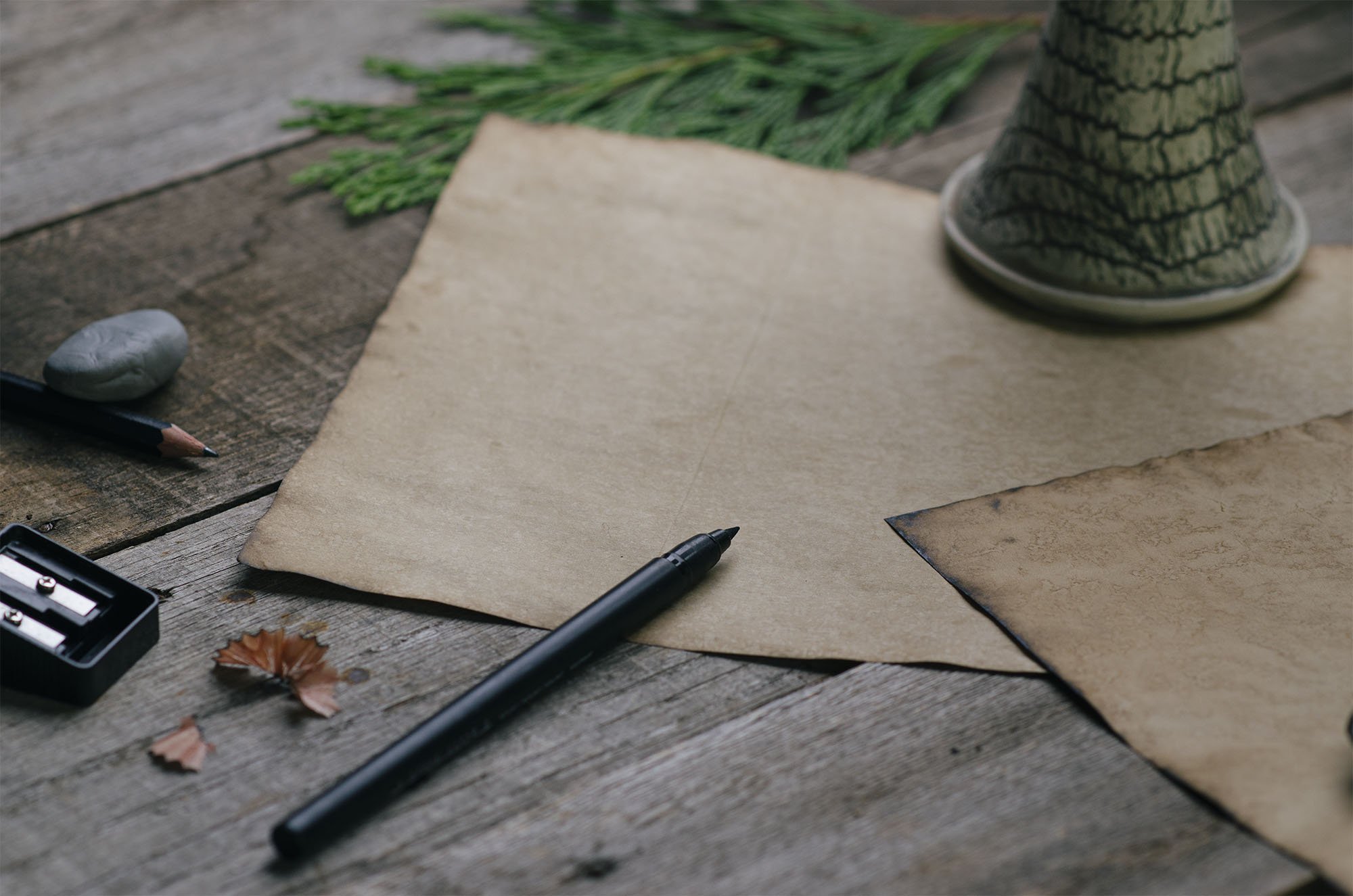
THE LEARNING ARCHIVES
Whether you're creating maps for a novel, rpg, or just for fun, this collection of tutorials and map tips will help you create more professional and believable maps for your story!
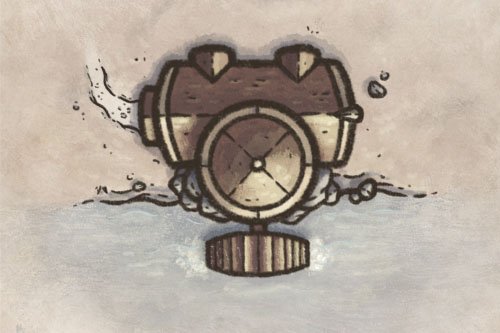
How to Draw a Water Wheel Mill
How do you turn grain into flour without electricity? One of the most effective methods was to harness the power of water to turn a large water wheel, which would turn a great stone that would grind large quantities of grain into flour. Including a water wheel on your city or village map is a great way to give another layer of interest and realism to your fantasy setting.
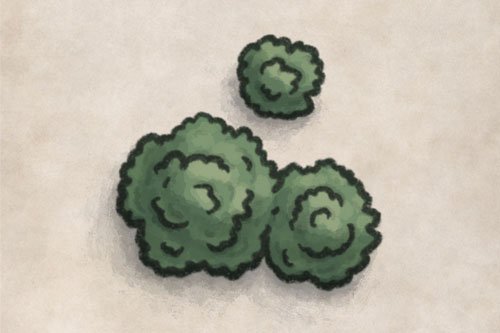
How to Draw Forests - Top Down Perspective
You’re city or village map is just about done, but you need to add some trees to breathe some life into the surrounding landscape. In this tutorial, I’ll show you how you can draw some simple trees that will stand out and really make your fantasy map pop!

How to Draw 7 Fantasy Map Borders
Want to draw a border on your map but don’t know where to even start? Borders are a creative and fun way to put some lore and style into your maps. Making these borders requires some skill but once you get the hang of it things get fun really quickly. In this guest tutorial, Gerralt (DimensionDoor_Maps) will share 7 beautiful borders you can begin using today on your maps!
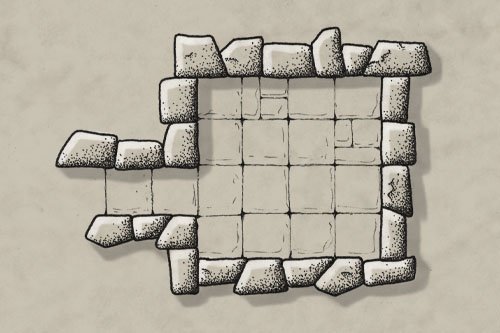
How to Add Depth with Stippling On Your Dungeon Maps
Stippling is a powerful and yet simple technique you can use to give your dungeon maps a lot of depth. If you enjoy the classic pen & ink look, then this technique is for you. In this guest tutorial, Fred (Whiskey_n_Ink) will walk you through how you can use stippling to add dimension to your dungeon maps!
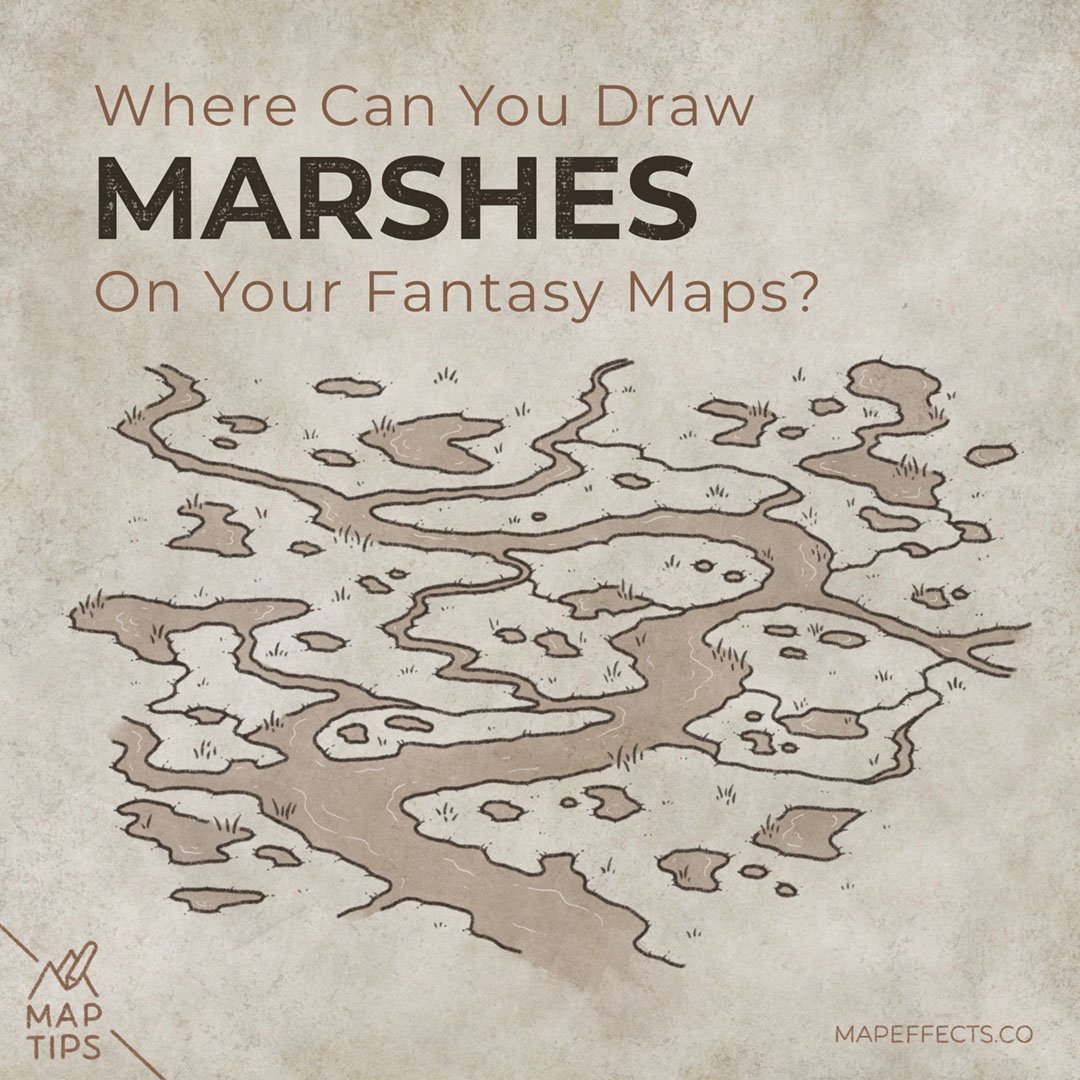
Where to Draw Marshes on Fantasy Maps?
There are so many ways you can utilize marshes in your worldbuilding and storytelling. They can be a place of great abundance and biodiversity, or they can be somewhere filled with foreboding and danger. Either way, it’s important to understand how they actually form in order to place them on your map.
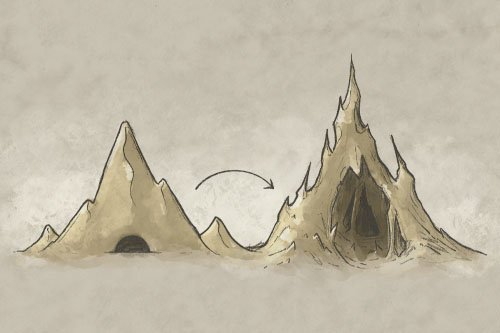
Using Shape Language to Give Your Maps Character
Did you know that the shapes you use when drawing features on your fantasy maps can actually cause certain emotional triggers in the viewer? In this guest tutorial, Gerralt (DimensionDoor_Maps) will walk you through how you can use the power of shape language to give your maps more character!
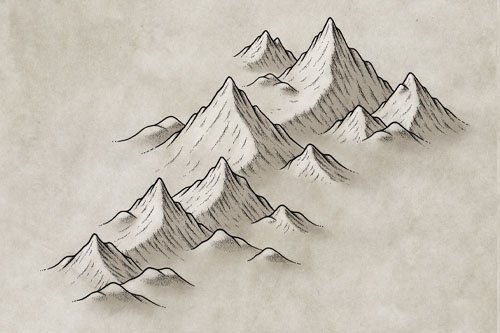
How to Draw Stippled Mountains
There are many ways you can draw mountains on a fantasy map, but this method will walk you through how to use a traditional stippling technique which brings a bit of a Victorian aesthetic to your modern fantasy cartography.

How to Draw a City Block
City maps can be a lot of fun to draw, but they come with their own unique set of challenges. It’s one thing to draw individual buildings that are completely isolated from one another; it’s another to draw a city block where everything is more mashed together. In this tutorial I’ll walk you through my process to sketching, inking, and finally coloring a city block so you can add them to your own fantasy maps!

Where to Place Rivers on Your Fantasy Maps
Rivers are likely an essential feature for the fantasy world you’re creating. Water is vital for life as we know it, not only for survival but transportation or trade. Understanding where to place them on a map is challenging if you don't want it to appear arbitrary. But if you grasp how water moves through a landscape, it will go a long way toward creating a sense of realism for your maps and worldbuilding.
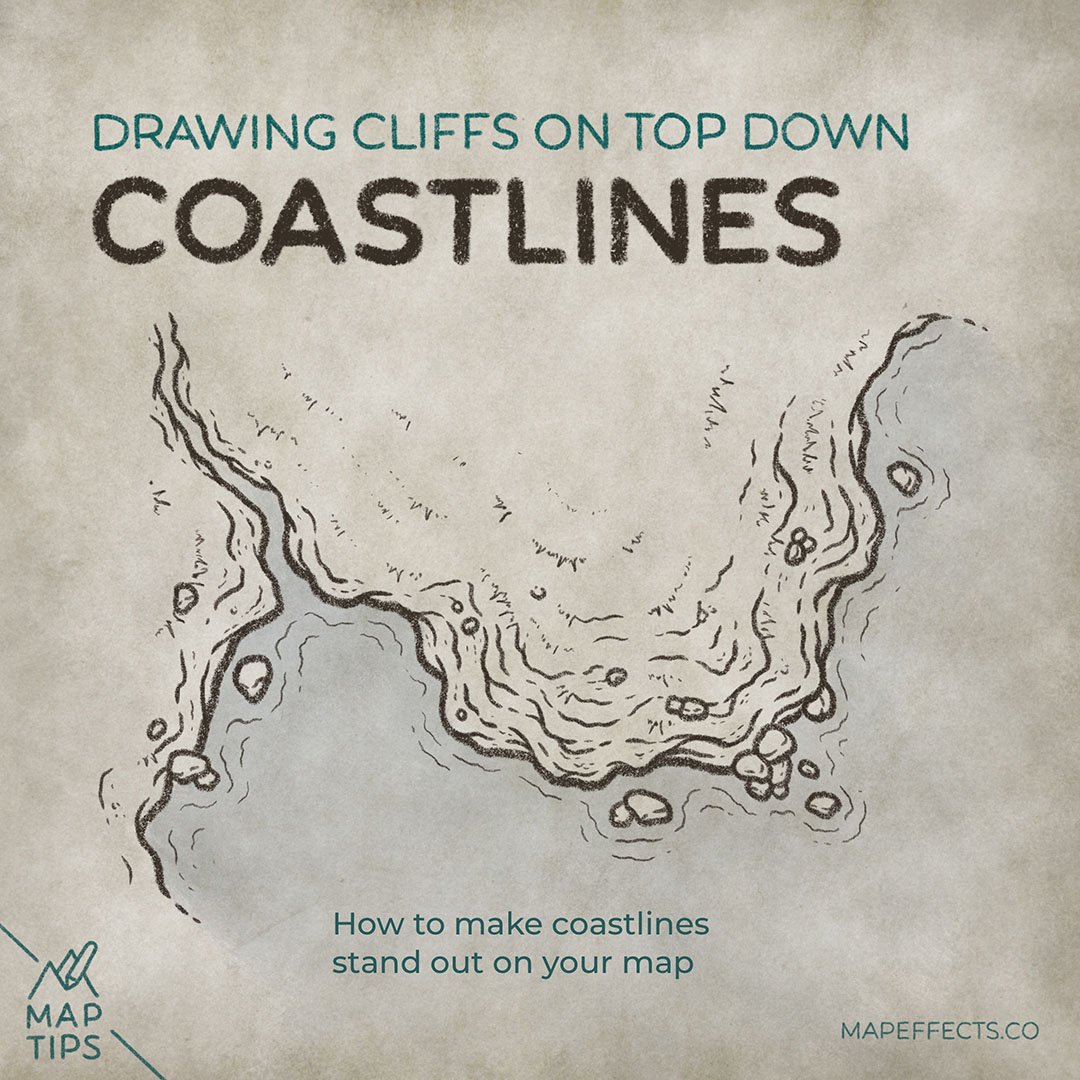
Drawing Cliffs on Coastlines in Top Down Perspective
One of the biggest challenges with fantasy maps in a top down perspective is they tend to look a bit flat. Fortunately, there are some simple tricks you can use to build up the layers of the landscape to give a sense of depth. In this Map Tip we’ll be looking at how to draw cliffs on a coastline in this perspective and make them really stand out in your map.
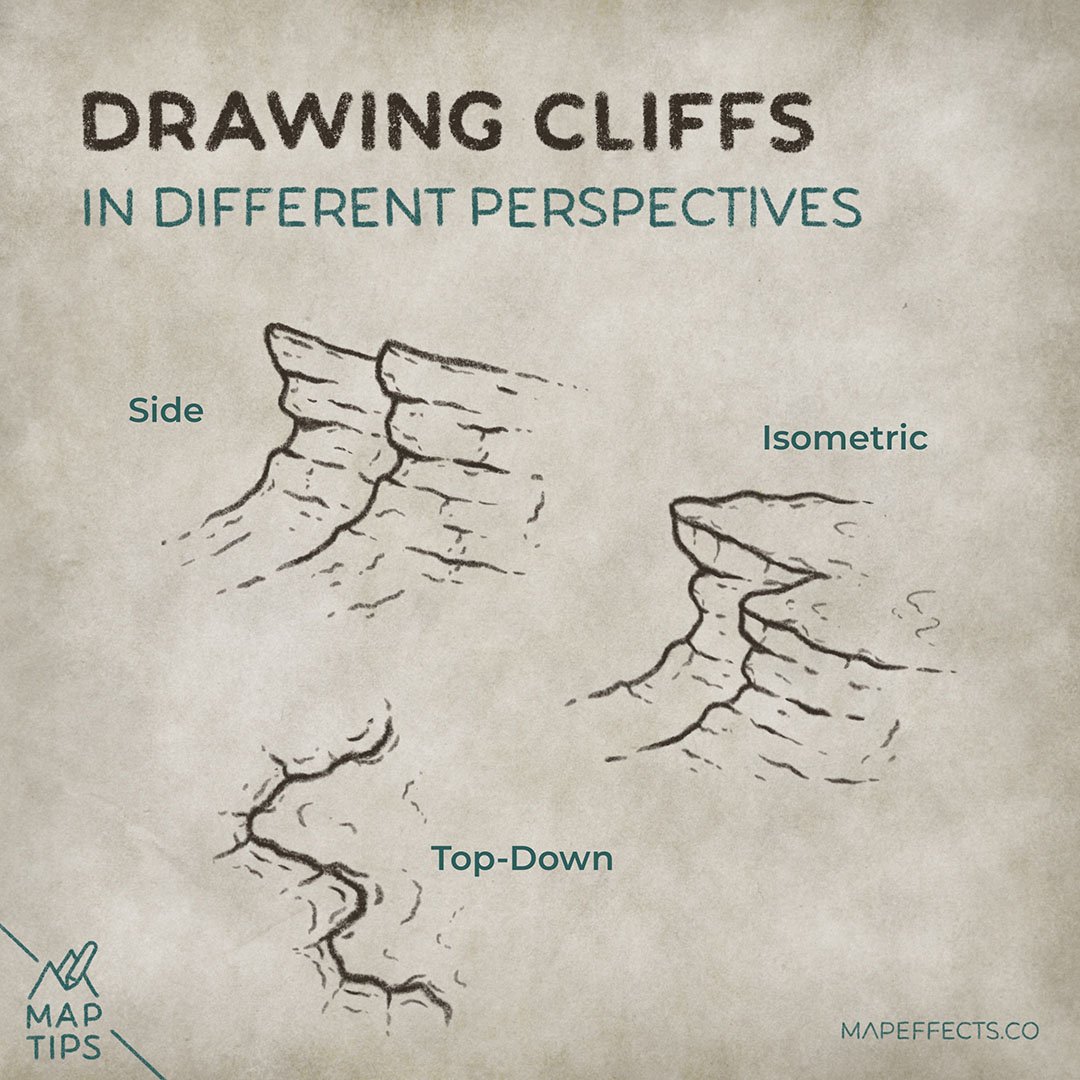
Drawing Cliffs in Different Perspectives
When you sit down to draw a fantasy map for your story, one of the first things to decide is the perspective you’ll use. The most common tend to be isometric and top down, but which should you use? Here we will look at some of the benefits of each using something like cliffs to show some of the differences.

Drawing Deltas on Your Fantasy Maps
Deltas are a key source of agriculture for civilizations due to their nutrient rich soils. One of the key things that allowed Egypt to rise to and maintain power for so long was their acess to the Nile River and it’s delta. Now, lets look at how they form so you can realistically add them to your fantasy maps.
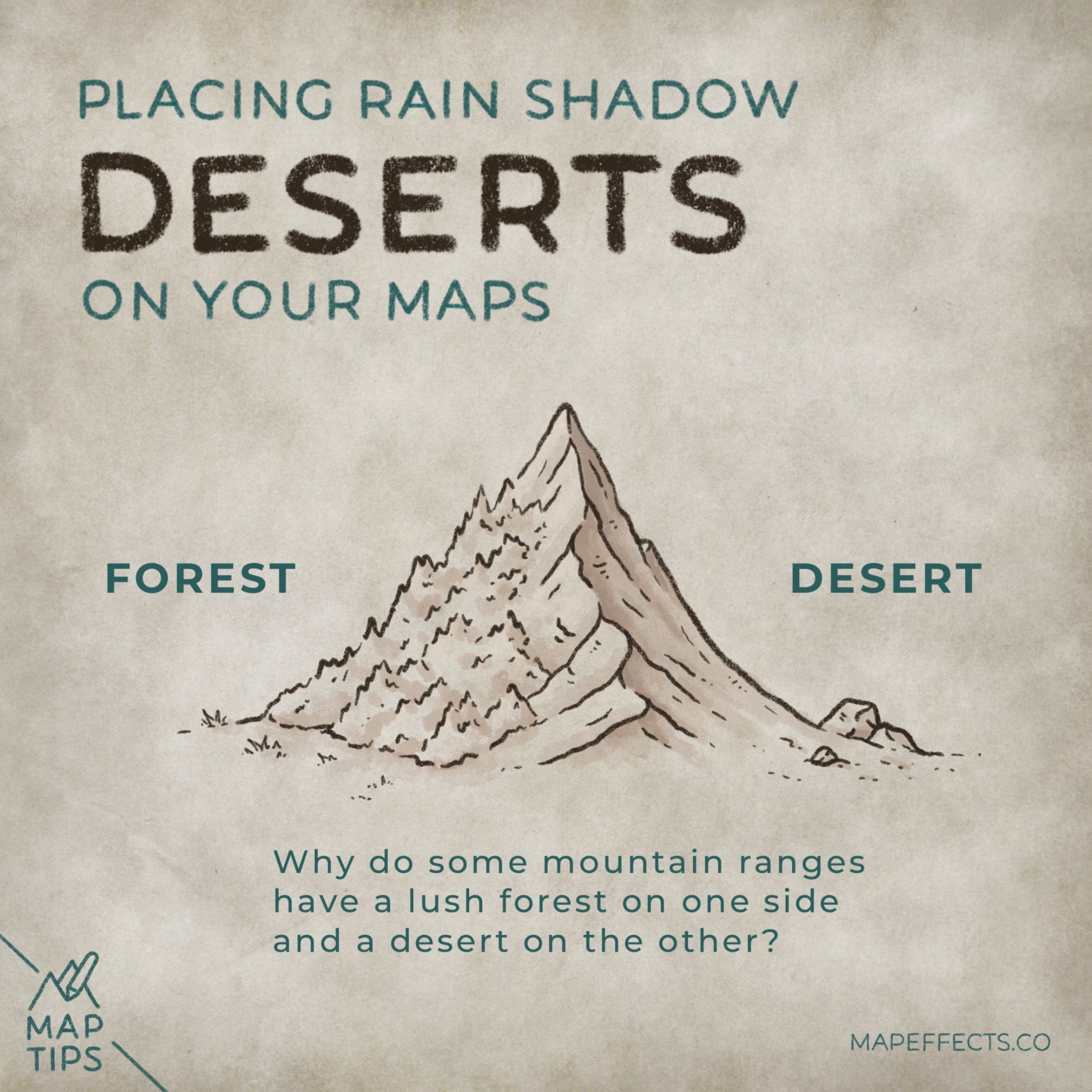
Placing Rain Shadow Deserts On Your Fantasy Maps
Why do some mountain ranges have a lush forest on one side and a desert on the other? In this Map Tip we’ll look at how a rain shadow desert can form so you can draw them on your own maps.

Avoiding Visual Tangents
Visual tangents are one of those things that can creep into your work. The worst part is they draw attention to themselves because they’re by nature distracting. So what are they and how can you avoid them when drawing your fantasy maps?
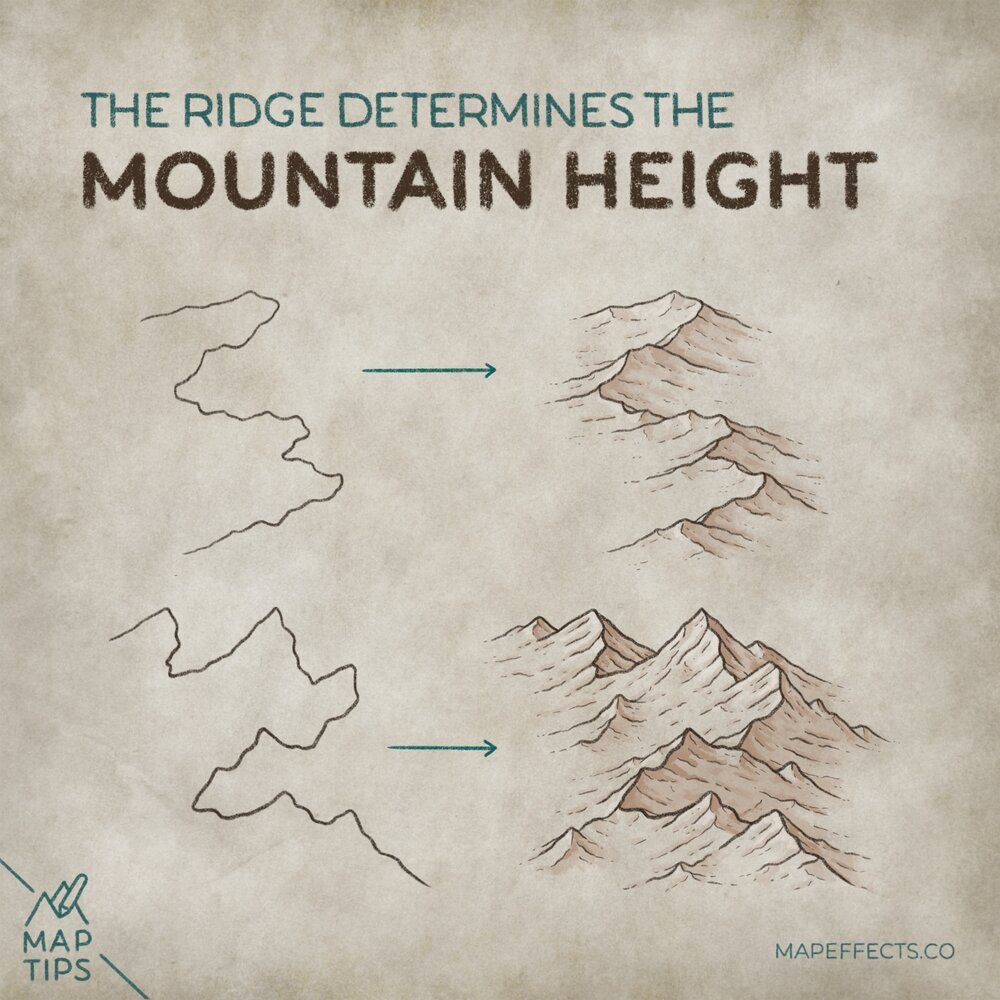
The Ridge Determines Mountain Height
One way to make your fantasy map more believable is to vary the size of the mountain ranges. Not all mountains in our world are the same height, and they shouldn’t be in your story either. If you are using the Ridgeline Mountain Method, then how you draw the initial ridgeline will play a large role in how your mountains look when they’re finished.
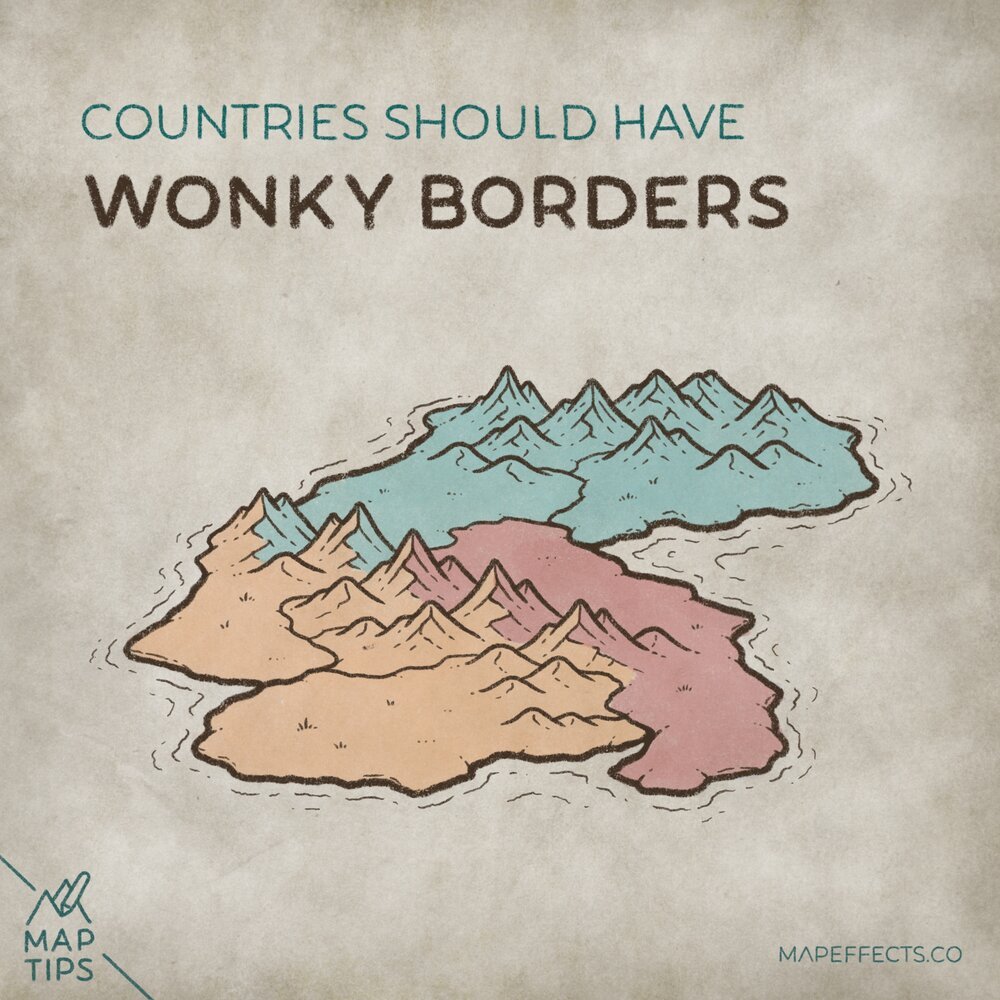
Countries Should Have Wonky Borders
One mistake people often make when drawing maps is they make their borders look like a geometric grid. In reality, this reflects a relatively modern way of thinking. With the ability to see our world from an airplane or even space, we tend to want to divide things up in very clean, simple boxes. But, if you were on the ground and the best you could do was climb a mountain to get a read on the land, then how would you divide up borders?

River Rules - Lakes Only Have One Outlet
Rivers are one of those tricky things to draw correctly on a map because they’re almost too familiar; we don’t usually spend much time thinking about how they actually flow through a landscape. In this case, it’s how rivers interact with lakes and how being mindful of this when you draw your maps can go a long way in making your world more believable.
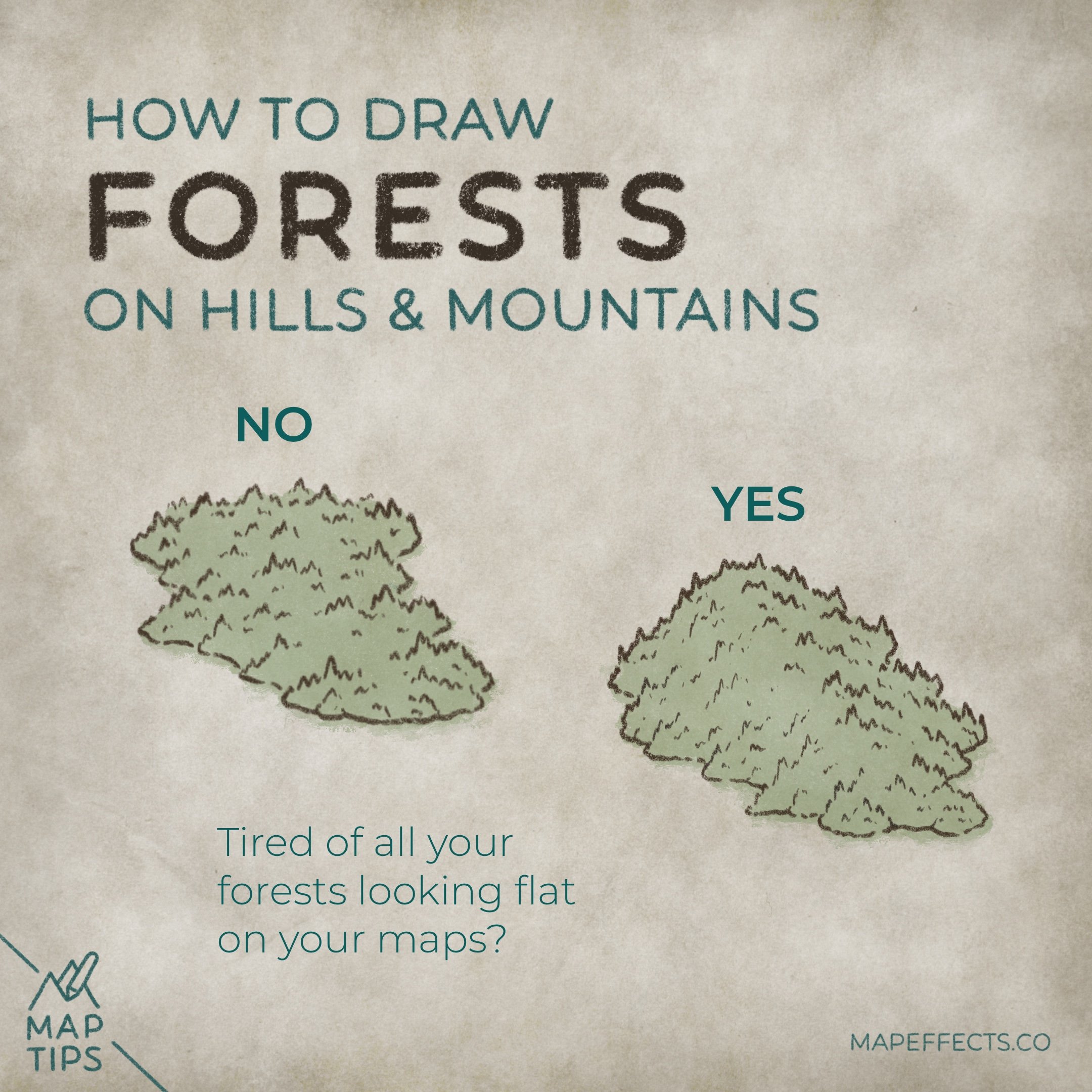
How to Draw Forests on Hills & Mountains
Are you tired of your forests on your fantasy maps looking a little too…flat? This is a common issue and one I know I struggled with for a long time as I was learning. In this Map Tip I’ll give you a couple of simple things you can do to overcome this issue, and draw forests that look like they’re popping off the page just with line art.
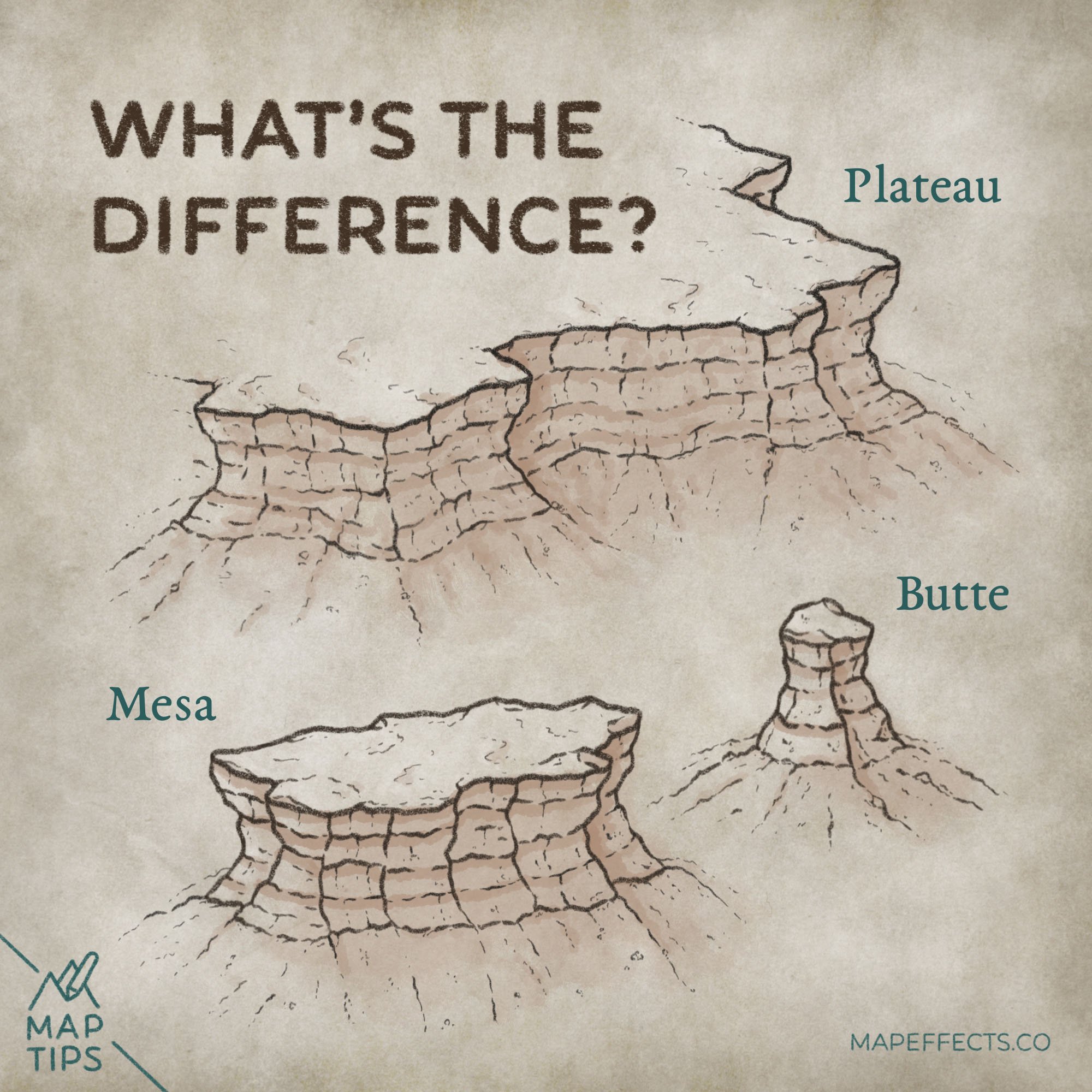
Plateaus, Mesas, & Buttes - What’s The Difference?
Plateaus, mesas, and buttes can look very similar and it can be a challenge to know the difference. Things become even more confusing when you listen to the average person describe these cliff formations, because they’ll often use the names interchangeably. So how can you tell the difference so you know what to name them on your fantasy map? Much of it comes down to the overall size, but there are a couple other things simple things to keep in mind which will help you distinguish them.
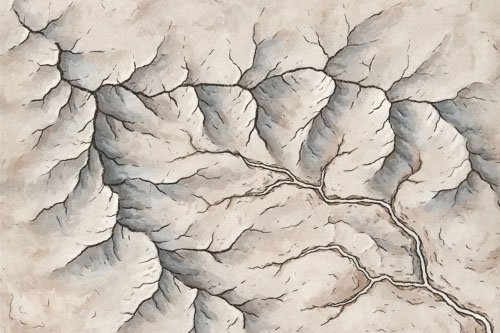
How to Draw Mountains in Top-Down Perspective
One of the most important features on fantasy maps are the mountains. Not only are they prime real estate for dwarves and dragons, but they play an important role by impacting political borders, travel, and even weather patterns.
But, they can be challenging to draw in a top down perspective and still get a good sense of scale and depth. While it is much easier to accomplish this in an Isometric Perspective, there are ways to really make your mountains pop off the page. So let’s start mapping!
